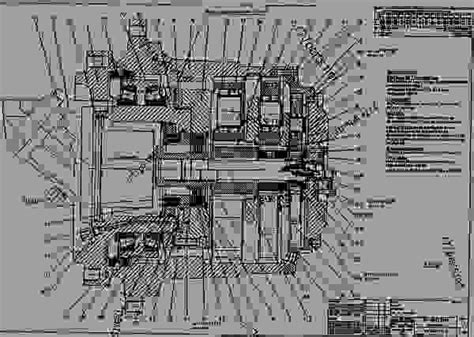Trouble-Free 350Z Final Drive Installation: A Comprehensive Guide
The Nissan 350Z, a beloved sports car known for its exhilarating performance, can benefit significantly from a final drive upgrade. Whether you're aiming for improved acceleration off the line, higher top speeds, or a more relaxed cruising experience at highway speeds, swapping out the final drive is a popular modification. However, this isn't a task for the faint of heart. This guide aims to provide a comprehensive, trouble-free approach to 350Z final drive installation.
Understanding the 350Z Final Drive
Before diving into the installation, let's grasp the fundamentals. The final drive, located in the rear differential, dictates the ratio between engine speed and wheel speed. A lower numerical final drive ratio (e.g., 3.90) results in quicker acceleration but lower top speed, while a higher ratio (e.g., 3.54) offers improved fuel economy and higher top speed at the cost of acceleration. Choosing the right final drive is crucial and depends heavily on your driving style and intended use.
What are the common 350Z final drive ratios?
The 350Z came with various final drive ratios depending on the year and model. Common ratios include 3.36, 3.54, 3.90 and even some rarer variations. Understanding your car's original ratio is the first step in selecting a suitable replacement.
How do I determine my current final drive ratio?
You can usually find this information on the vehicle's sticker located in the driver's side door jamb, or consult your owner's manual. Alternatively, a quick search online for your specific 350Z's VIN number can reveal this data.
Tools and Materials Needed for 350Z Final Drive Installation
This job requires a comprehensive set of tools and a clean, well-lit workspace. Essential items include:
- Jack and jack stands: Crucial for safe vehicle elevation.
- Wheel chocks: For added safety.
- Torque wrench: Absolutely essential to prevent damage. Use the correct torque specifications throughout the process.
- Socket set: Various sizes will be required.
- Drain pan: To collect transmission fluid.
- New differential fluid: Use the correct type and amount specified in your owner's manual.
- New final drive: Ensure you've purchased the correct ratio.
- Shims (if needed): Pre-installation setup may require shimming for correct pinion depth.
- Shop manual: A factory service manual is invaluable, providing detailed instructions and torque specifications.
- Penetrating oil (PB Blaster, etc.): Aids in loosening stubborn bolts.
- Clean rags: Keep everything clean to prevent contamination.
Step-by-Step Installation Guide
This is a simplified overview. Always refer to a factory service manual for precise steps and torque values. This process requires mechanical aptitude and careful attention to detail.
-
Vehicle Preparation: Secure the vehicle on jack stands, engage the parking brake, and use wheel chocks.
-
Drain Differential Fluid: Carefully drain the old differential fluid into a drain pan.
-
Remove Differential: Disconnect the driveshafts, unbolt the differential mounting bolts, and carefully lower the differential.
-
Final Drive Removal and Installation: This is the most delicate part. Refer to your shop manual for the correct procedure to remove the old final drive and install the new one, paying close attention to the positioning of components and any potential shimming requirements.
-
Differential Reinstallation: Carefully reinstall the differential, ensuring all bolts are tightened to the correct torque specifications.
-
Refill Differential Fluid: Fill the differential with the correct amount and type of fluid.
-
Torque Check and Final Inspection: Check all bolt torque values and inspect for leaks.
-
Road Test: After a short road test, check the differential fluid level again.
Troubleshooting Common Issues
- Difficulty Removing Bolts: Apply penetrating oil and allow sufficient time for it to work before attempting removal. Use the correct size socket and avoid stripping the bolt heads.
- Improper Shimming: Incorrect pinion depth can lead to premature wear. Refer to your shop manual for precise shimming instructions.
- Fluid Leaks: Inspect all seals and gaskets. Tighten any loose bolts.
- Unusual Noises: If you hear unusual noises after installation, immediately stop driving and re-inspect your work.
Frequently Asked Questions (FAQs)
How much does a 350Z final drive installation cost?
The cost varies significantly depending on whether you perform the installation yourself or hire a mechanic. Parts can range from a few hundred to over a thousand dollars, depending on the final drive ratio and brand. Labor costs can easily add several hundred dollars if you opt for professional installation.
What are the benefits of upgrading the final drive?
The main benefits include improved acceleration, higher top speed (depending on the chosen ratio), and altered driving characteristics. A lower ratio might prioritize faster acceleration, while a higher ratio might focus on better fuel economy and higher top speed.
Will upgrading the final drive affect my speedometer accuracy?
Yes, it's likely to affect the accuracy of your speedometer. You may need to recalibrate your speedometer after the installation, or consider using a GPS-based speedometer for accurate speed readings.
Can I install the final drive myself?
While it's possible, it requires mechanical aptitude, the correct tools, and a careful adherence to instructions. Incorrect installation can lead to damage. If you lack experience, it's best to have a professional perform the installation.
This guide aims to provide a solid foundation for understanding and undertaking a 350Z final drive installation. Remember to always consult a factory service manual for detailed instructions and torque specifications. Safety and precision are paramount. Remember, this is a complex task; if unsure, always seek professional assistance.

